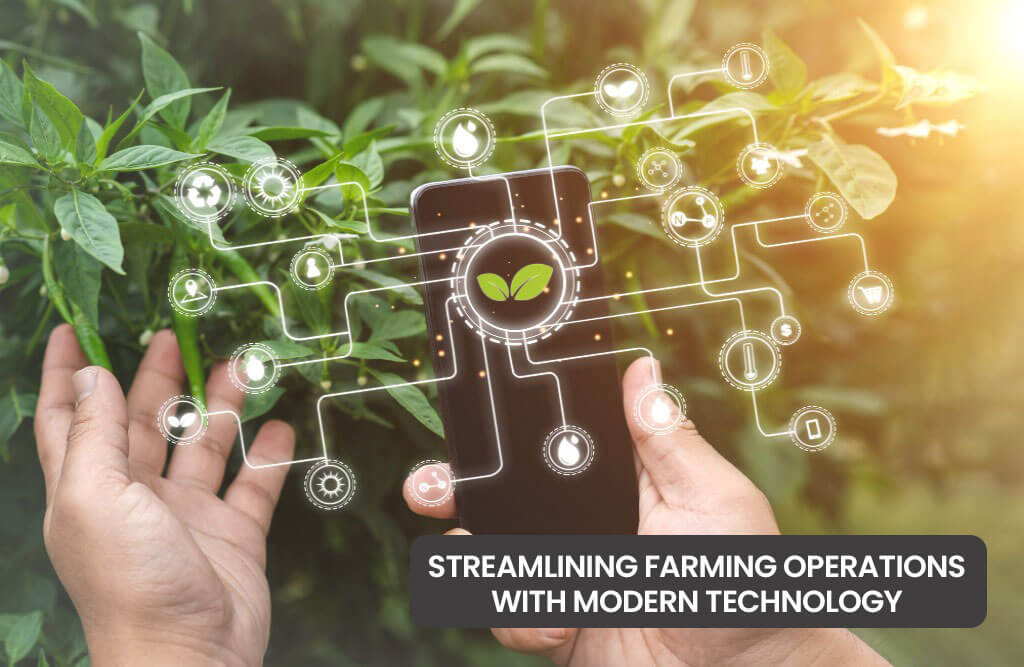
The challenges faced by today's farmers have inspired the incorporation of agricultural automation initiatives, of which the widespread application of software-operated agricultural drones is a small part. The central and state governments have taken bold steps to assist farmers who are struggling post-pandemic and due to urbanization. One such step is granting permission for field robotics. It promises to transform the lives of American agricultural businesses. Agricultural automation will become inevitable, and it will undoubtedly alter the way people work.
Cleanliness in agriculture: How does it work?
With the support of GPS and GIS, guiding farmers in their movements, robotic farm automation solutions can create a tangible 3D model using high-resolution cameras and sensors. This model then assists them in autonomously performing activities and effortlessly completing tasks. On the other hand, it simplifies the lives of agricultural workers, making them straightforward, secure, and more enjoyable.
Farm automation will be synonymous with simplicity because we already have the technological capabilities to bring advanced solutions, such as environmentally operated smart greenhouse systems, into play. Three major technologies, which we can expect to see in the fields in the coming years, are robots, autonomous machines, and drones. The entire world is embracing GPS-operated precision farming with pride and gratitude, knowing that it will change the way people produce, harvest, distribute, and consume food and will expand significantly by 2025.
Robots and Autonomous Machines:
Robots are here to take the place of humans in automated farming. In reality, robotic technologies are designed for tasks such as planting seeds, plowing, spraying, harvesting, and various other routines, leaving humans to learn the skills of servicing robots. Robots do not need to resemble two-legged creatures like humans. They can come in the form of tractors, combines, and other types of machinery. Autonomous farming robots and drones are poised to face four major missions.
Everything is based on seeding, isn't it? You can forget about walking the fields another mile (figuratively) now, as autonomous drone seeders will assist you. They are skillful and fast; ten drones can plant approximately 400,000 trees in a day. Therefore, while drones are the main agents of crop quality and safety, autonomous information sowing technology is at the heart of change in the future of agriculture.
GPS-Controlled Plow: The whole realm of farming automation has come down to reducing the number of people in the fields. GPS-controlled precision plow, operated by IoT Robotics, is one way to ensure that crops are harvested safely and securely.
Precision Picking:
When it comes to plants and crops, they all have their favorites. Some do it quickly; some do it at a slower pace. But they all need to be harvested one day or another. How do we know when that day has come, and how do we determine which part of the field should be harvested? Another thing is that many berries, fruits, and vegetables are delicate and perishable, often affected by human handling. Therefore, choosing precision picking is now being utilized as one of the main tools to increase the efficiency of the harvesting process quickly and skillfully.
General Software Skills: Farm workers should possess skills such as operating work tasks through a tablet, connecting to Wi-Fi networks, sending messages, organizing files, etc., along with the ability to handle other electronic devices effortlessly.
Microsoft Office / G Suite: These are essential tools for team communication and data sharing. Employees should know how to open a spreadsheet, input data, and extract information.
GPS or GIS: Common in modern agriculture, numerical literacy is quite crucial. Therefore, employees need to know how to work with data analysis tools.
Geographic Information System (GIS): The holy grail of precision farming, GIS is something that agricultural workers should have at least some knowledge of. GIS-based agriculture forms the basis of active field operations and planning.
Farming Automation Solutions: In discussing solutions of farming automation technologies, one thing should be agreed upon: Farming digitalization is not an accuser of job shortage in the farming sector. Instead, it is one of the major agents of positive change.
Agricultural Automation Solutions:
Monitoring and Analysis: Besides plowing, sowing, and challenges, agricultural software and hardware are extensively used for monitoring and analysis of crops, ensuring their well-being until harvest.
Guidance: Making timely and informed decisions is crucial for successful agriculture, with luck playing a role only in about 10% of cases, primarily due to weather conditions. Despite this, with the assistance of agricultural robotics, factors like soil quality, crop maturity, and crop health can be easily defined. However, it seems that technology has already advanced.
Irrigation: Robotic irrigation reduces farming costs. In reality, we won't talk much about the principles of robotic irrigation's cost and its work. Instead, we'll show you something truly interesting.
Conclusion: Agricultural automation and technological solutions are bringing about a significant change in the lives of farmers. This is an effort to strengthen the conditions of cleanliness, safety, and more enjoyable work, aiming to improve the overall agricultural sector. To move towards a brighter and safer future for the agriculture sector, we must be proficient in using these new technologies and automation practices correctly. This not only enhances productivity in the agricultural field but also presents farmers with a golden opportunity to embrace new and exciting skills for future careers.